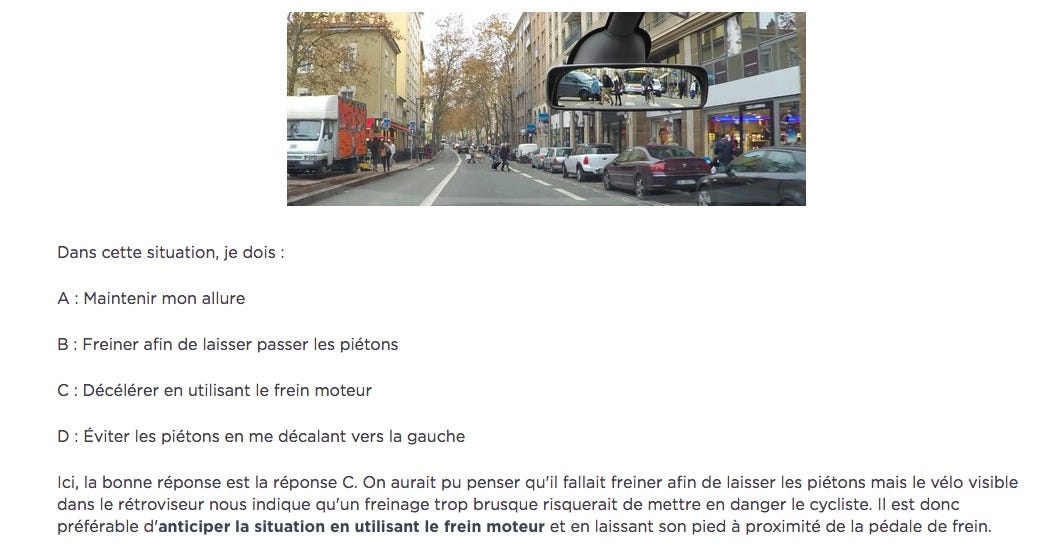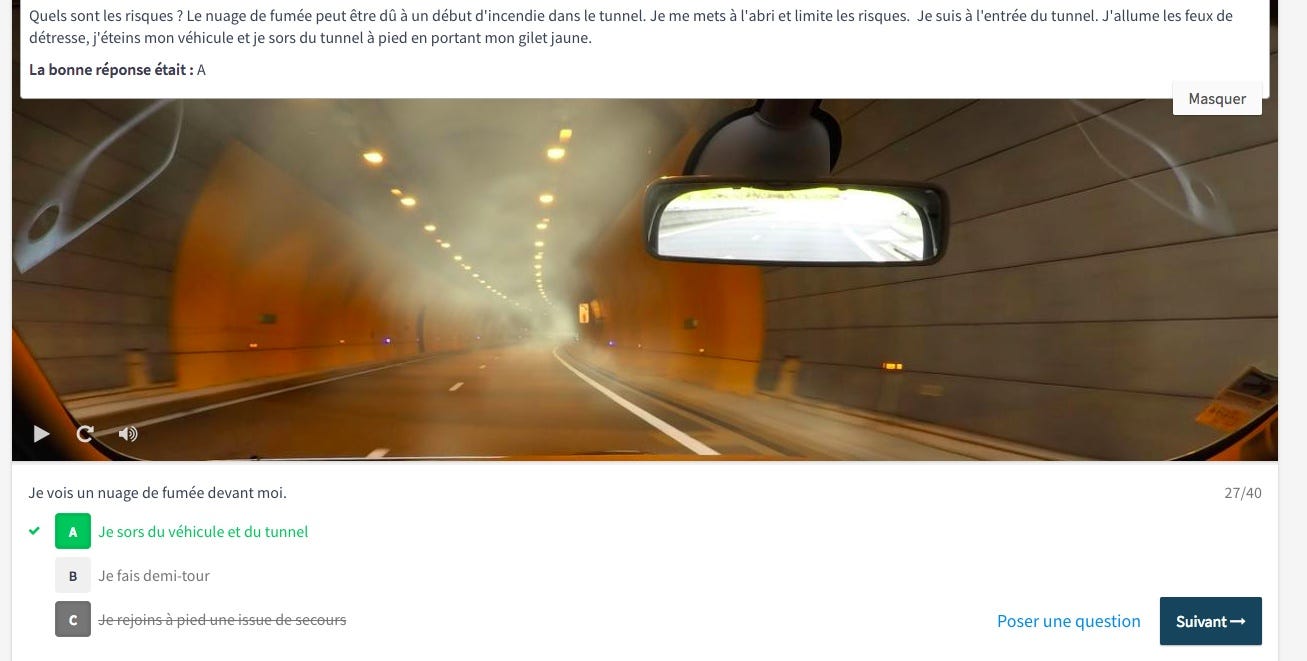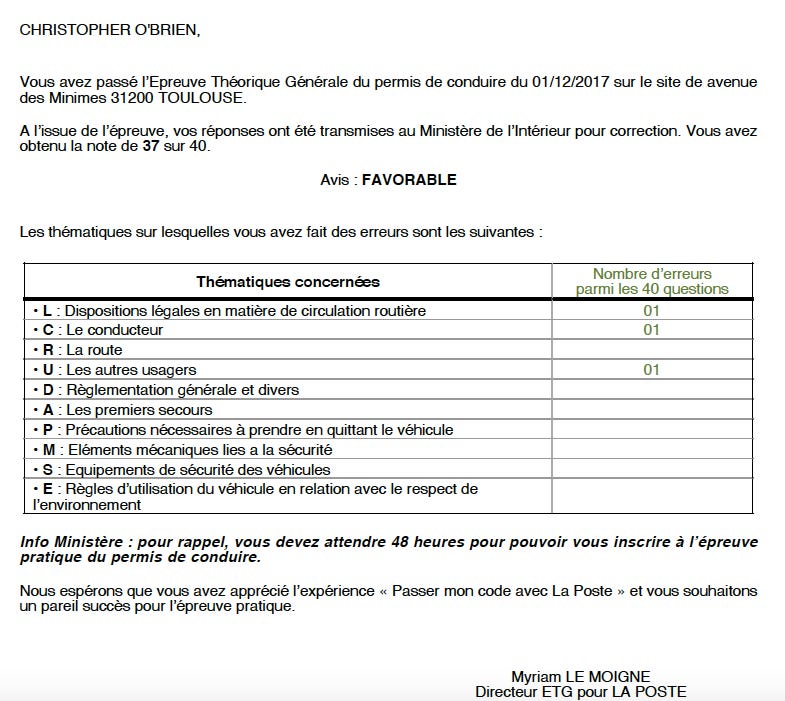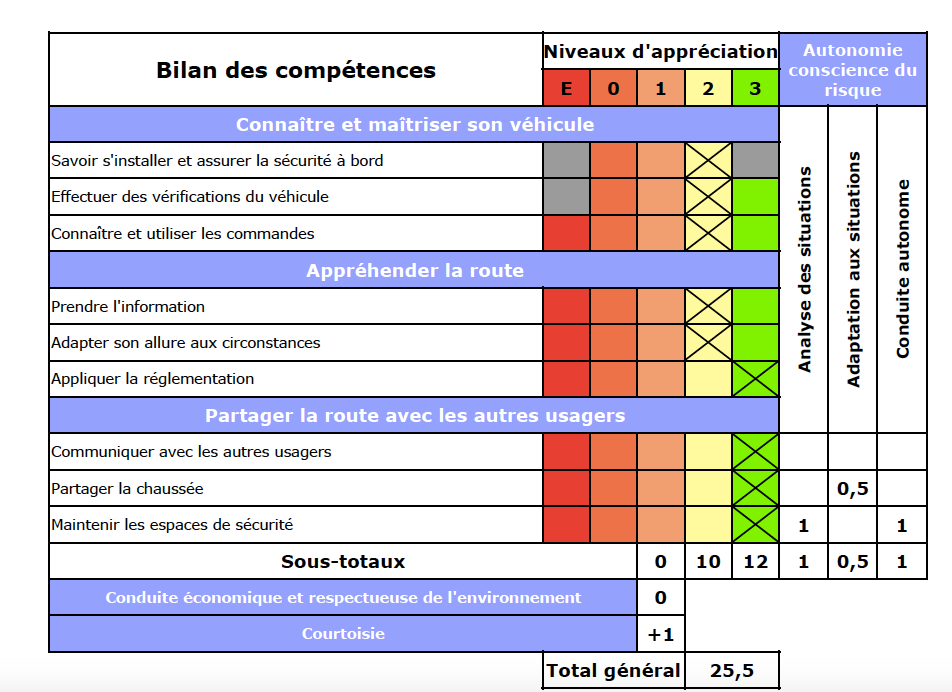About The 4 Years I Spent Getting My French Driver's License
Yes, 4 years.

This week I wrote about my odyssey of trying to get my French driver’s license for The Local in France. But as always, some of the story was left on the cutting room floor.
This is the original introduction, which gives a bit more context around my initial steps and failures in this, the most difficult of French administrative tasks:
To be fair, the 4-year odyssey of obtaining my French driver’s license is primarily California’s fault. Though had I not been forced to run this famously bureaucratic country’s most daunting regulatory obstacle course, I would have missed a chance to stare into the darkest depths of France’s administrative soul.
Upon moving to France in 2014 from the San Francisco Bay Area, I was permanently deputized to be my family’s chauffeur by a secret vote from which I was excluded. I could legally drive for a year with my California license, but then I’d need a French one.
Alas, the U.S. delegates governance of driver’s licenses to its states in a fit of federal madness. When I explain this to French friends, there is a pause, and then their eyes widen as the implications hit them. “You mean…,” they begin. Yes, one must get a new license any time one moves to a different state. I have had 3 different state licenses, with California by far offering the most difficult exam.
More relevant, however, is that California has not signed an international reciprocity agreement for driver’s licenses. This decision is made state-by-state. France is surprisingly mellow in this regard. If your territory will take the French license, France will take yours. Easy peasy. You come from Djibouti? Step right this way. Myanmar? No problemo. Canada? Here you go.
California? Sorry, you’re skunked. Upon discovering this, I began researching the dreaded Auto Écoles and learned that the average cost for getting a driver’s license in France is an eye-gouging €1,804. It is a rare situation where the public benefits in the U.S are better: I learned to drive by taking a class at my Kansas high school. Not only was it free, but I got academic credit. In a class taught by the football coach.
The price tag of €1,804 leads foreigners in France to contemplate some rather far-fetched scenarios. Like, would it be less expensive to move to another country and pass the driving test and then come back to France and exchange it? As Americans, we reviewed the list of 18 states that have reciprocity agreements to see if we had once lived in any of them (nope!) or to see if there were cheap flights to one where I could stay with friends and pass the test (nope, again!).
It remains a mystery as to why California hasn’t joined these reciprocal agreements, but my suspicion is that it likely has something to do with the lingering anti-immigrant sentiment.
It feels like ancient history now, by I remember during the California recall vote in the early 2000s that removed Gov. Gray Davis and resulted in Arnold Schwarzenegger becoming governor (yes this really happened; you did not just dream about it), the issue of driving licenses for “illegals” was one of the hot-button topics. That issue didn’t get resolved until 2015 when the state created a license specifically for undocumented residents.
After getting my French license in 2019, I spent some time trying to find out why there is an impasse in California, but no one on the French or California side could provide any answers. It simply seems to be a non-issue at this point in California politics.
Driving While French
But in France, driving-related matters remain serious political issues. Most notably, the gilets jaunes movement was initially sparked by a proposed increase in gas taxes, a measure that hit rural areas particularly hard because declining economies meant people were driving further and further to work.
But the issues extend far beyond that. Given the €1,800 average price for getting a license, an estimated 680,000 people in France drive without one. In 2019, a number of measures were proposed to lower that cost to €500. Naturally, these changes prompted protest by the driving schools who are already suffering due to the rise of online driving schools such as the one I used (Ornikar). (Or as some snarky American friends call it, “Horny Car.”)
My sympathy for their troubles is somewhat limited due to my experience.
When I first registered with a driving school in 2015, the process was maddening. They explained that I must first pass the written test, the code, before I could start the driving lessons. “Why?” I asked, because I was still new to France and had not yet learned that this was the question one must never ask here.
“Because,” they unhelpfully explained. “C’est comme ça.”
But, I persisted, I have been driving since before most of your driving instructors were born. I have a California license that is still valid. Surely, you can make an exception so we can accelerate the process?
“Non.”
After the code, I would then be required to take the driving lessons. Schools generally recommend 20, and students pay per class, roughly €35 to €45 for each lesson. I asked, as someone with 35 years of driving experience, how many classes I must take. After a slight shoulder shrug, I was told I would be evaluated at the first lesson and they would then estimate the number. So there was no way to get an actual cost estimate in advance.
Of course, to take the driving exam, I needed to use my instructor’s car because it’s equipped with the second set of controls on the passenger side. So the school, which I am paying by the class, has sole authority to decide when I am ready to take the driving test and every financial incentive to force me to take the maximum number of classes.
This was a system we referred to simply as, “the scam.”
The Test
I could not begin to tally the amount of time I spent studying for the written test. There were the hours watching the official videos on Ornikar. But the complexity of the driving test has also spawned a massive number of YouTube videos for mastering even the most obscure questions, which I felt obliged to also watch.
It became such an obsession that I couldn’t think of anything else for a time. An American friend was also studying for the test, and any time we’d get together, it was all we could talk about. Our resentment, the obscure rules, the maddening process. It drove our spouses crazy.
How insane is the driving test? Only about 58% of candidates pass it. This has given birth to a whole sub-genre of tales about the pour souls who fail the test HUNDREDS OF TIMES! The current record number of failures by one cadndiate is said to be 959.
Fans of Dix Pour Cent (Call My Agent), will recall there was an episode in Season 2 dedicated to a young actor who needed to get his license for an upcoming role but kept failing. The solution? The agents got him stoned before the test so he would be calm enough to pass and then secretly followed him along the route to remove any obstacles.
As I noted in The Local story, many of the questions on the written test are difficult because they are wholly subjective. The written test shows you 40 slides of photos taken from the driver’s perspective. Here’s the one I cited in The Local:
For example, imagine you are driving down a city street and a pedestrian is crossing where there is no crosswalk while a car that is parked along the side is signalling that they are going to pull out. What must you do? A) Keep driving without slowing down. B) Tap the brakes to slow down. C) Lift your foot off the gas pedal and let the engine slow down the car. D) Swerve to the left to avoid the pedestrian.
Personally, either B or C works for me. But the only correct answer is: C. Why? Because far off in the distance of your rearview mirror, there is a dude on a bicycle behind you and tapping the brakes might be dangerous for him. Better to let the motor slow you more gradually.
Some of them are just insanely tricky. In this example, you are asked what to do if you are driving in a tunnel and see smoke. One option is to leave your car and head to an emergency exit. But that is not the correct response. Why? Because if you notice in the rear view mirror, the driver has just entered the tunnel. So rather than rushing to an emergency exit, the correct response is to simply walk back out of the tunnel.
You might think that either response is correct. But in France, you would be wrong.
This is why I remain somewhat stupefied that I passed both parts of the test on the first try. In my head, this remains my single greatest administrative triumph.






I think in practice the states that have reciprocal agreements are usually states where large French companies have located. For example, South Carolina is on the list because Michelin is there.
I also faced this and found the test infuriating - as you note, the answers are often quite subtle and feel like they are trying to play "gotcha"...
My favorite was "your car has been towed away - do you go to the Mairie (Mayor's office) or the Comissariat de Police (police station) to inquire?" And my thought was "who cares? I go to one or the other and if it's the wrong one, they send me to the right one!"
But a French friend explained, this question has political significance - for a long time, people would go to the Mairie to get the ticket fixed as a political favor. So they were trying to train people no, you go to the police station (the police in France are nationalized) to avoid political interference.
So bigger lesson is.. as I often found in France... there's more going on than I'm aware of. :)
I knew France's exam was expensive, but I had no idea it was this tricky and stressful. Great article, and thanks for the intro. I read the article in The Local but felt like something was missing. I live in Louisiana where, because of our Frenchy ties, you'd think we'd have a reciprocal agreement as well. But, nope. Le sigh.